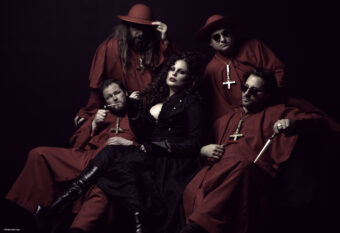Classical composers piled scores of instruments atop each other for centuries, and jazz bandleader Stan Kenton kept the “Wall of Sound” concept alive through the 1950s. But then producer Phil Spector transformed it into a rock’n’roll tradition that apparently will never be silenced, with myriad disciples serving as his echo chamber ever since.
Phil Spector
Back to Mono (1958–1969)
Abko
Decades before he shot any actresses, Spector — along with engineer Larry Levine, arranger Jack Nitzsche, and lieutenant Sonny Bono — perfected an equation wherein massed guitars, strings, horns, percussion, and reverb exploded brilliant Brill Building–built teen melodrama into “little symphonies for the kids.” This box gathers nearly 80 of them: not just the Ronettes’ and the Crystals’ incomparable street operettas, but Wagner-scale emotion from Gene Pitney to Ike and Tina, as well. Disc four is the greatest Christmas album ever made—first released the day JFK was killed.
The Beach Boys
Pet Sounds
Capitol
Phil Spector’s influence was patently obvious in the orchestrally layered backing tracks, in the mono mix, in the sad songs, in the very initials of the album title. But where Spector swore singles were rock’n’roll’s natural medium, Brian Wilson was inspired by Rubber Soul to make an album-as-album. Two instrumentals, a sea chantey, strange electronic instruments, and sounds literally designed for pets: For better or worse, indie and prog rock both start here, and this group’s role as a surfboard-obsessed all-American car club officially ends.
Bruce Springsteen
Born to Run
Columbia
The Beach Boys embraced Spector’s Wall by putting aside childlike Chuck Berry licks and cars-and-chicks, but Springsteen (who coproduced with Jon Landau after clashing with Mike Appel) figured those could be part of the pomp — “an opera out on the turnpike.” So he traded in the beatnik verbosity and jazzy clave of his first two cult albums for bombast as big as Highway 9. Meat Loaf was only a rest stop away, but for the time being, tramps like us broke the trap.

Also Read
SAME AS THE OLD BOSS
Ramones
End of the Century
Sire
Ramones had devised their own more primal wall of AM-radio rama-lam, so it was poetic justice that they would hook up with Spector — who, legend once had it, held them at pistol point to complete the transaction. Always underrated, thanks in part to its three-minute-barrier-breaking song lengths and various remakes (a cover of the Ronettes’ “Baby, I Love You” was a U.K. hit), Century holds up fine. Though oddly, the Spector-free follow-up, Pleasant Dreams, sounds even more Wall-like.
Frankie Goes to Hollywood
Welcome to the Pleasuredome
Island
Prog and Eurodisco both constructed ’70s cathedrals from Spectoresque classical gas, so when producer Trevor Horn wed the genres on early-’80s albums by groups like ABC and Dollar, it was a marriage made in Gomorrah. His over-the-top, under-the-bottom masterpiece came from these hysterically hyped Liverpudlians — Hi-NRG stadium rockers fixated on homoerotica and the Cold War. They even covered “Born to Run” and Edwin Starr’s “War” (a year before Bruce).
The Jesus and Mary Chain
Psychocandy
Reprise
In 1985-86, two important debuts by loud-guitared, post-Ramones bubble-rock bands opened with drumbeats swiped from the Ronettes’ “Be My Baby.” One was Poison’s Look What the Cat Dragged In. The other was Psychocandy, on which brothers Jim and William Reid set yummy-yummy Ohio Express–style oral-sex double entendres to sticky-sweet, hang-ten Beach Boys hooks, then slathered a dense pudding of Velvets-via-Joy Division feedback and distortion on top — begatting My Bloody Valentine, who begat shoegazing multitudes.
Amy Winehouse
Back to Black
Universal Republic
Brits are forever fantasizing and fabricating soul symphonies from across the ocean, so it’s more sensible to trace Amy Winehouse’s distanced blues back to Lisa Stansfield or Alison Moyet than to Billie Holiday. But on her blotto breakthrough, producers Salaam Remi and Mark Ronson surround her with brass sections, string sections, harp, Wurlitzer, the works. Result: a reassembled Wall, marinated for millions.
Vivian Girls
Vivian Girls
In the Red
Of all the indie upstarts to miniaturize the Spector aesthetic in recent years — from the Raveonettes to Girls to Dum Dum Girls to Best Coast — these Brooklyn babes might come closest to earning it. First, they’re a full-fledged girl group. So their Ramones/JAMC has Go-Go’s/B-52’s in it; their shoegaze has riot grrrl in it. And their debut (no production credit) crams all its lo-fi guitar blur and buried pop harmonies and ramshackle drumming into a more-charming-than-cloying 21 minutes.




